You’re looking at a long, curvy bird with a swan-like neck and legs that go on for days. Is it a crane? Is it an egret? Is it a heron?
These flashy shorebirds have more in common than a future as runway models. When you’ve got them in your sights, how do you tell them apart?
In this list, we’ll give you the rundown on birds that look like cranes and the key differences between them. You’ll be fully prepared to discern these similar and not-so-similar water birds when you’re out in the field!
Sandhill Crane
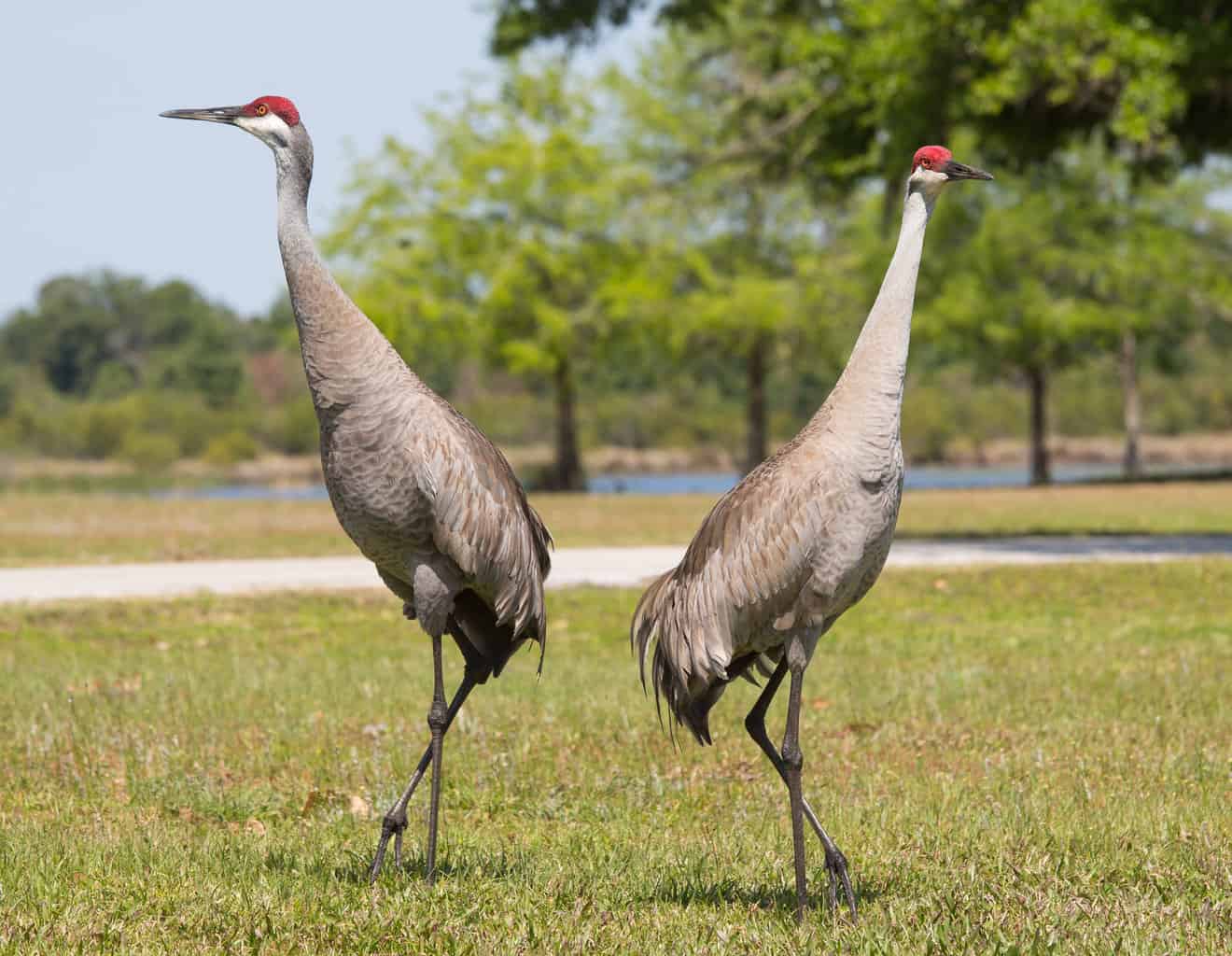
- Scientific Name: Antigone canadensis
- Length: 47.2 in
- Weight: 119.9-172.8 oz
- Wingspan: 78.7 in
The Sandhill Crane is one of just two species of cranes that live in North America. They’re a success story for conservation, rebounding from fewer than 1000 individuals to becoming a species of least concern.
These distinctive birds have a long profile with a “bustle” of tail feathers, a dark gray body, and a red crown patch. Unlike herons, they fly with their necks extended rather than tucked in.
These long-ranging water bird species migrate from northern North America to the southern United States and northern Mexico. Sandhill Cranes are also year-round residents in Mississippi, Florida, and Cuba.
Whooping Crane
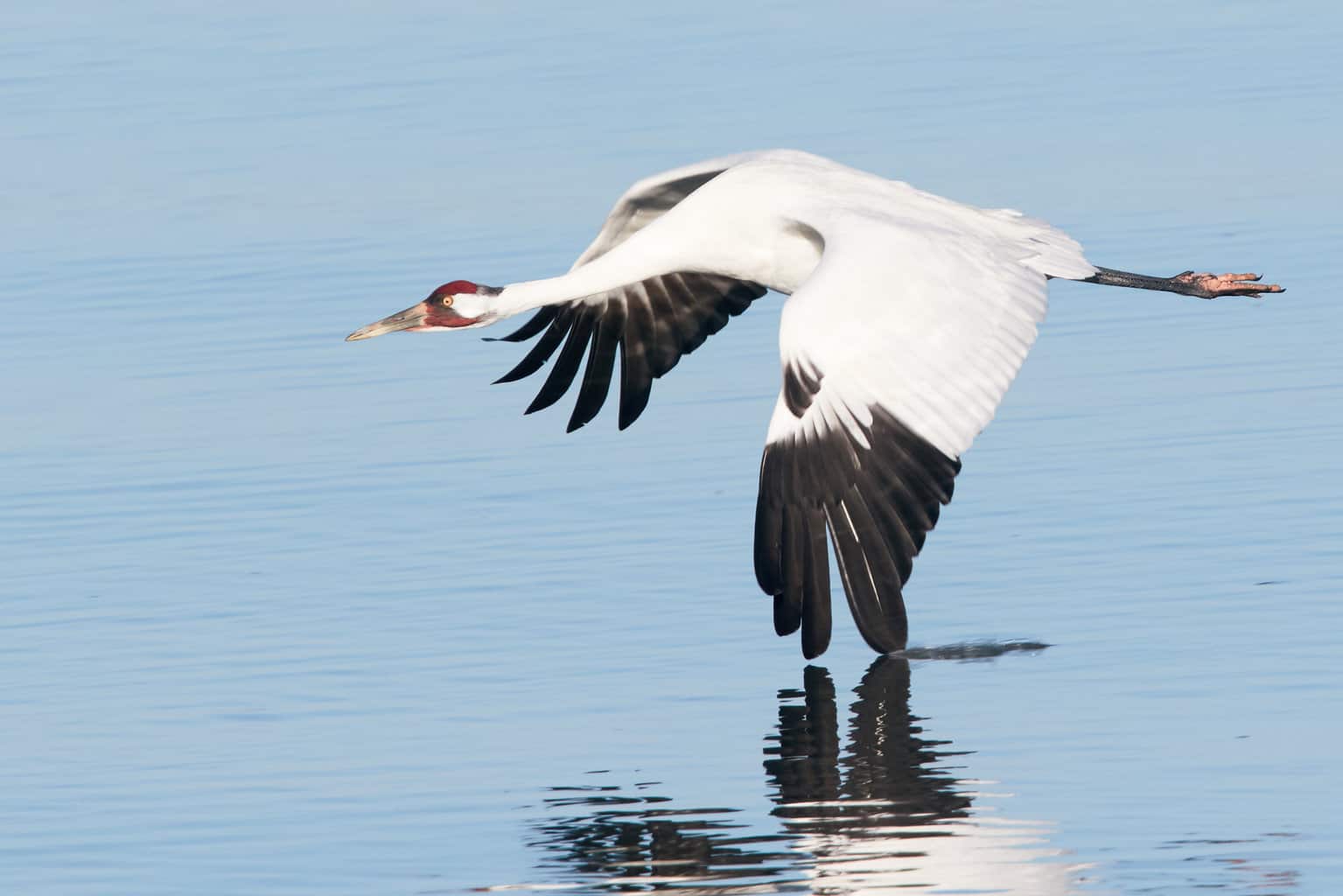
- Scientific Name: Grus americana
- Length: 59.1 in
- Weight: 211.6-275.1 oz
- Wingspan: 90.2 in
North America’s other crane species are much rarer than the Sandhill Crane. The Whooping Crane population dropped to just 21 individuals in 1941 and includes only 600 today.
Known for their loud call, these tall white birds are very large and sport black legs and bills. They also have red markings on their heads.
Small clusters of Whooping Cranes can be found in Canada (migrating to Texas), Wisconsin (migrating to Florida), and Louisiana. There is also a non-migratory group in Florida.
Great Blue Heron

- Scientific Name: Ardea herodias
- Length: 38.2-53.9 in
- Weight: 74.1-88.2 oz
- Wingspan: 65.8-79.1 in
A large and common bird that you might mistake for a crane is the Great Blue Heron. Its dusty blue coloration somewhat resembles the gray body of the Sandhill Crane.
Their large, rounded bodies with long curvy necks and long legs and bills are other features that resemble cranes.
However, Great Blue Herons have shorter necks and beaks than cranes and lack that red patch on the face. They also hold their necks back in a curved shape when flying, while cranes hold their necks out straight.
Found throughout the United States year-round, the Great Blue Heron breeds in southern Canada and spends winter in Mexico.
Roseate Spoonbill
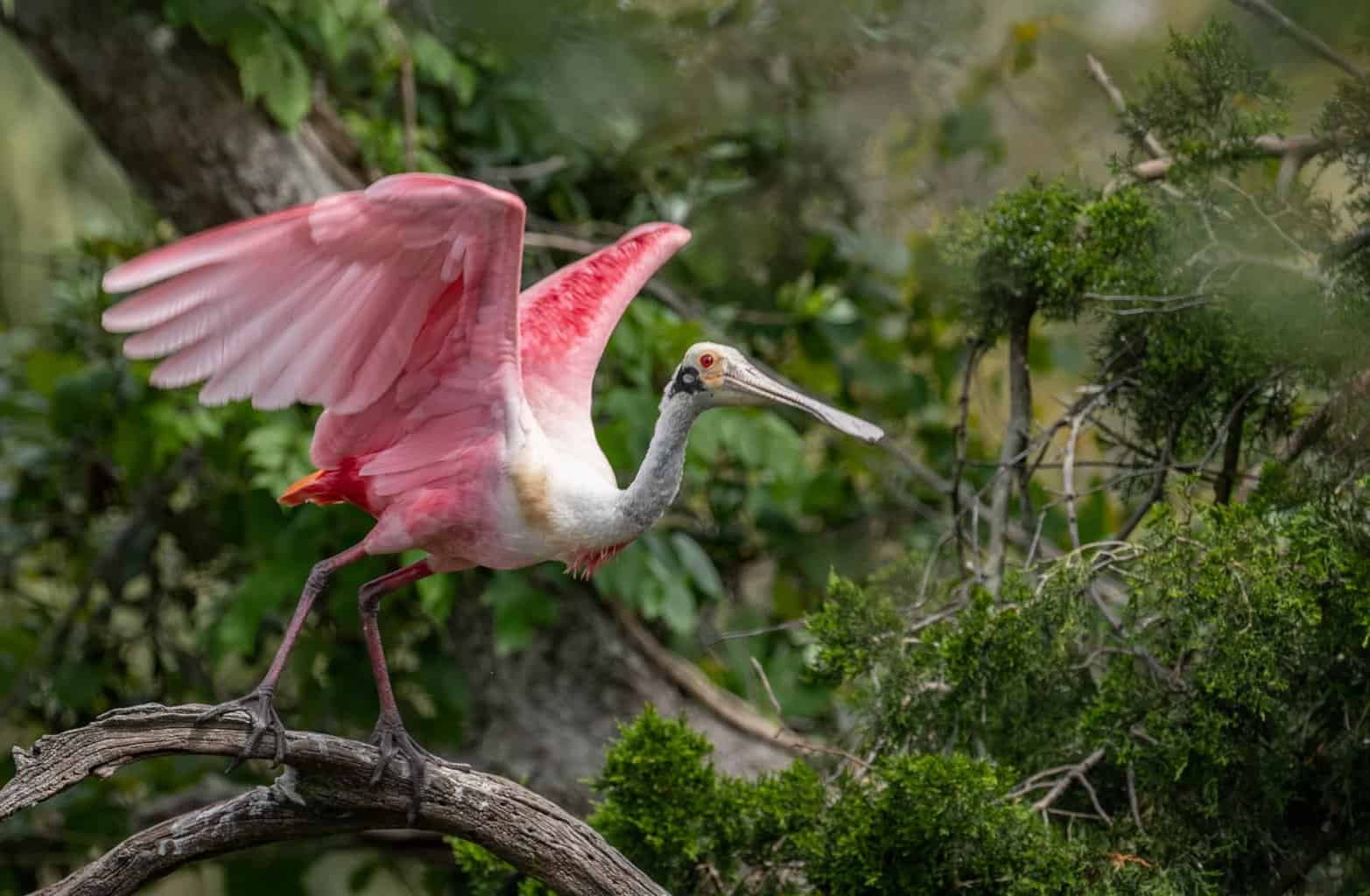
- Scientific Name: Platalea ajaja
- Length: 27.9-33.9 in
- Weight: 42.3-63.5 oz
- Wingspan: 47.2-51.2 in
This flashy and unusual bird would not be out of place in a fantasy novel! The Roseate Spoonbill is North America’s only spoonbill species. It’s often found near other water-loving birds, like herons, egrets, and ibises.
The bright pink body and distinctive flattened bill are immediate giveaways that distinguish the Roseate Spoonbill from both North American species of cranes.
The Roseate Spoonbill’s range also doesn’t have a ton of overlap with cranes. They live year-round along the Gulf coast, in the Caribbean, and across South America, and migrate to the coastal regions of Mexico.
White-faced Ibis

- Scientific Name: Plegadis chihi
- Length: 18.1-22.1 in
- Weight: 15.9-18.5 oz
- Wingspan: 35.4-36.6 in
The White-faced Ibis is a frequent visitor to marshes, farms, and fields. This iridescent bird is foraging for invertebrates, rather than fish. It’s also known for incorporating man-made trinkets into its nests.
From a distance, the White-faced Ibis is likely to look darker and smaller than a Sandhill Crane.
Get closer, and you’ll see more distinguishing features: maroon feathers and pink legs, a white facial outline, and a downward curving bill in dull gray.
White-faced Ibises range throughout the western United States and Mexico as migrants and are year-round residents in southern South America.
Great Egret
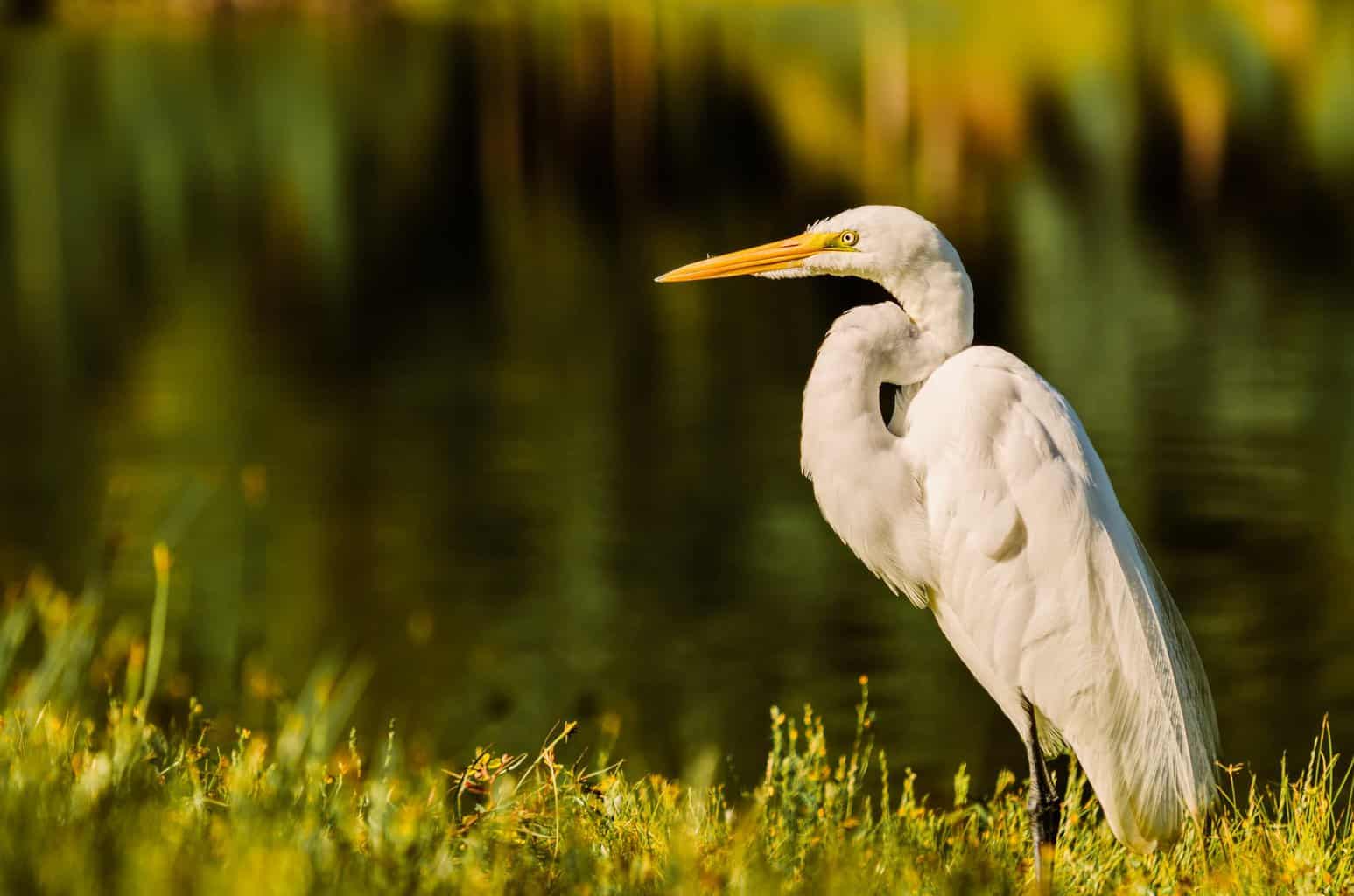
- Scientific Name: Ardea alba
- Length: 37.0-40.9 in
- Weight: 35.3 oz
- Wingspan: 51.6-57.1 in
The tall and stately Great Egret was nearly sacrificed for fashion: its feathers were so prized for hats and garments that it was nearly hunted to extinction.
Large, all-white egrets may look like Whooping Cranes, but they hold their necks in an s-shape as they fly slowly across the sky, while cranes will hold their necks out straight.
They also have white faces with a green patch around the eye, rather than the Whooping Crane’s red crown.
Great Egrets are year-round residents in South America and along the coasts of Mexico and the eastern United States. They also live year-round in pockets in California.
Further, they breed in the Mississippi river valley and migrate through a large portion of the United States.
Snowy Egret
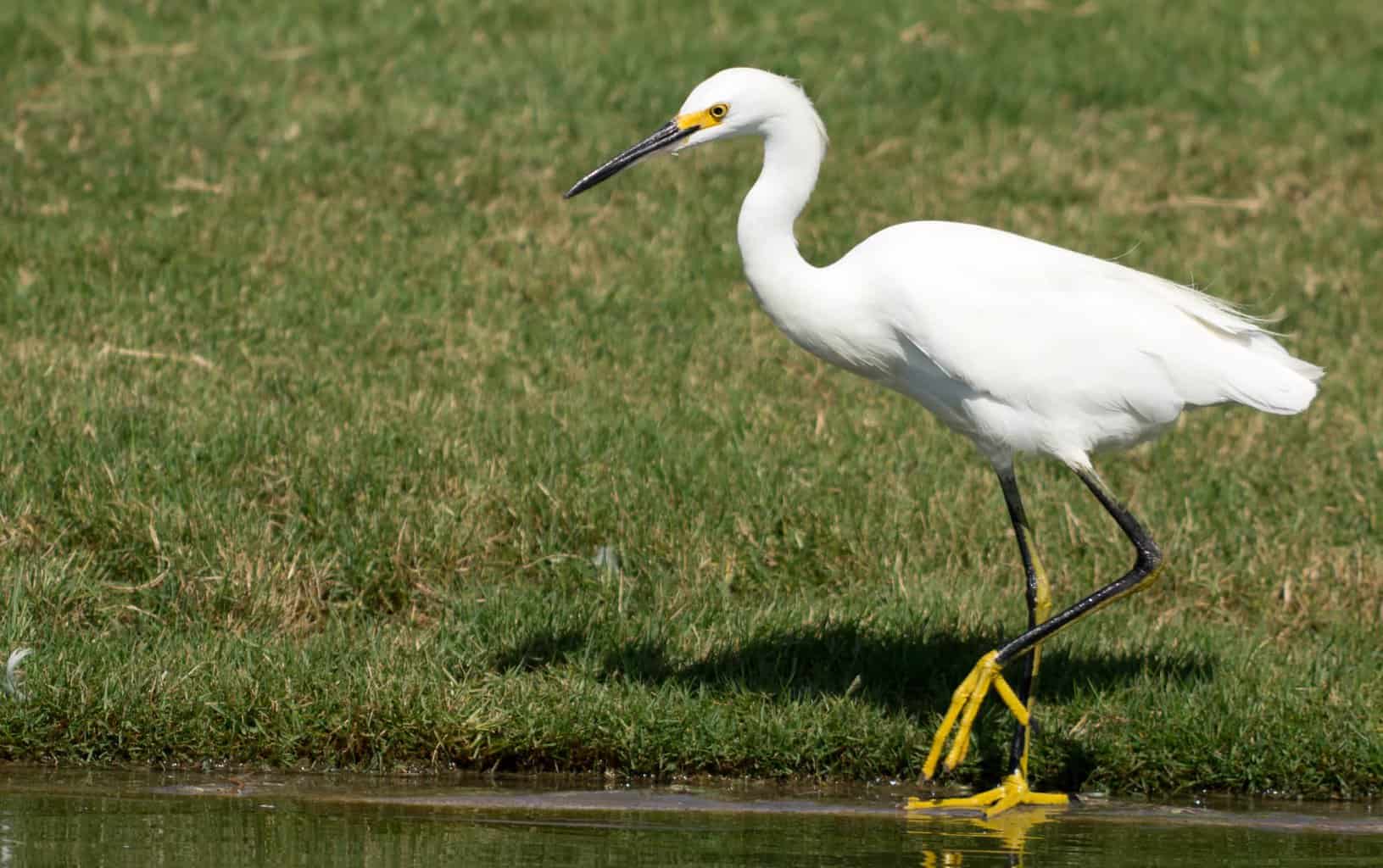
- Scientific Name: Egretta thula
- Length: 22.1-26.0 in
- Weight: 13.1 oz
- Wingspan: 39.4 in
The Snowy Egret was another victim of fashion. Its wispy plume feathers were once twice as valuable as gold. Some of the earliest conservation laws saved this bird from extinction.
Snowy Egrets are smaller than cranes. They lack the distinctive red facial patch, and they tuck in their necks when they fly. They have yellow skin at the base of their bills, along with yellow feet.
Snowy Egrets breed in the North American interior and along the Atlantic coast. Migrants winter to Mexico or the Gulf Coast. They live year-round in the Caribbean islands and South America.
Black-Crowned Night-Heron

- Scientific Name: Nycticorax nycticorax
- Length: 22.8-26.0 in
- Weight: 25.6-35.8 oz
- Wingspan: 45.3-46.5 in
True to their name, the Black-crowned Night-Herons are most active at night and spend their time stalking fish in marshes.
The Black-crowned Night Heron has a different profile from cranes. It’s a shorter, more solid-looking bird with a much shorter neck. It has a black back with a gray body and ruby eyes. Their bills are thicker and shorter than a crane’s.
Some Black-crowned Night Herons live in one place, and some are migratory. They can be found throughout much of North and South America, Mexico, and the Caribbean.
Tricolored Heron
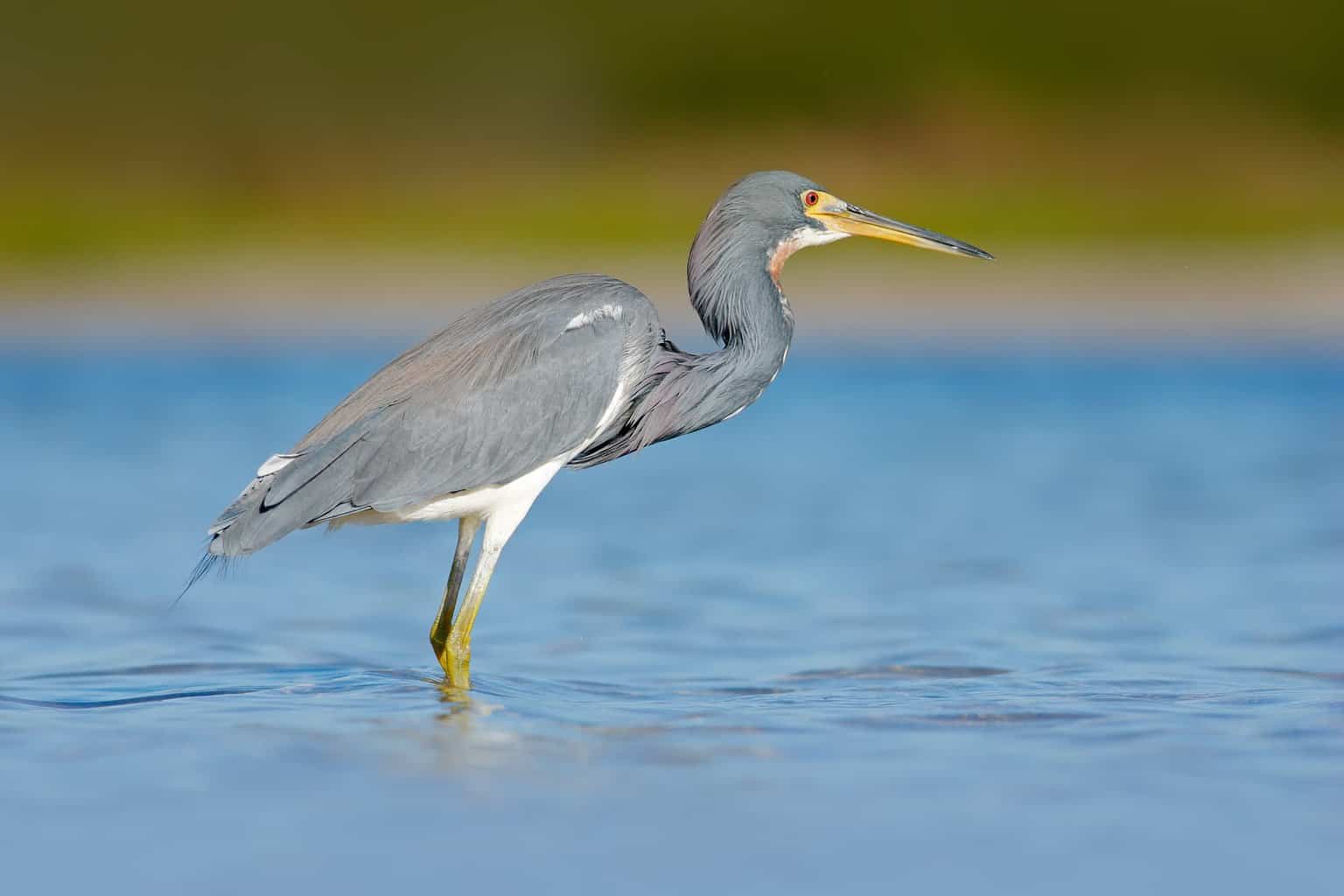
- Scientific Name: Egretta tricolor
- Length: 23.6-27.6 in
- Weight: 14.6 oz
- Wingspan: 37.4 in
Tricolored Herons used to be called Louisiana Herons. They mostly stick to the coastlines, where they like to stalk fish.
The Tricolored Heron is a large blue-gray bird with an appearance not dissimilar to the Great Blue Heron.
It’s slightly smaller than a crane, and, like other herons, flies with its neck tucked in that familiar s-shape.
You can find the Tricolored Heron along the Atlantic and Gulf coasts where it is a year-round resident, as well as migratory birds in Mexico.
Wood Stork
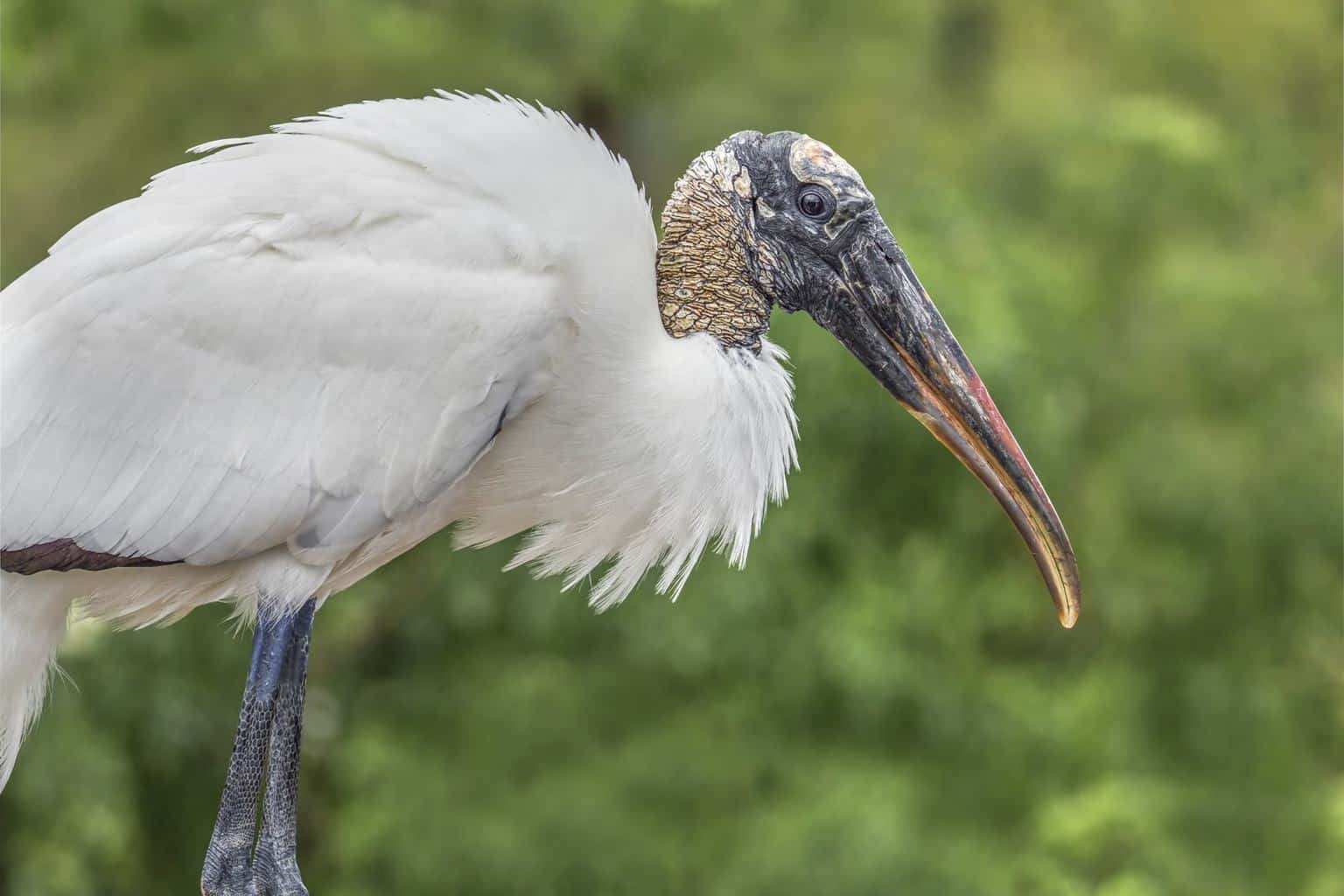
- Scientific Name: Mycteria americana
- Length: 33.5-45.3 in
- Weight: 72.3-93.1 oz
- Wingspan: 59.1-68.9 in
Wood Storks nest in trees together in large colonies. You’ll find them in swamps and wetlands, searching for fish and crustaceans with their thick bills.
Although Wood Storks aren’t quite as big as cranes, they’re certainly tall!
These sizeable white birds lack the red crowns of Whooping Cranes, and instead have black faces and beaks, with black flight feathers.
These primarily non-migratory birds live along the gulf coast and in Florida and Cuba. They are also found throughout much of South America.
Reddish Egret
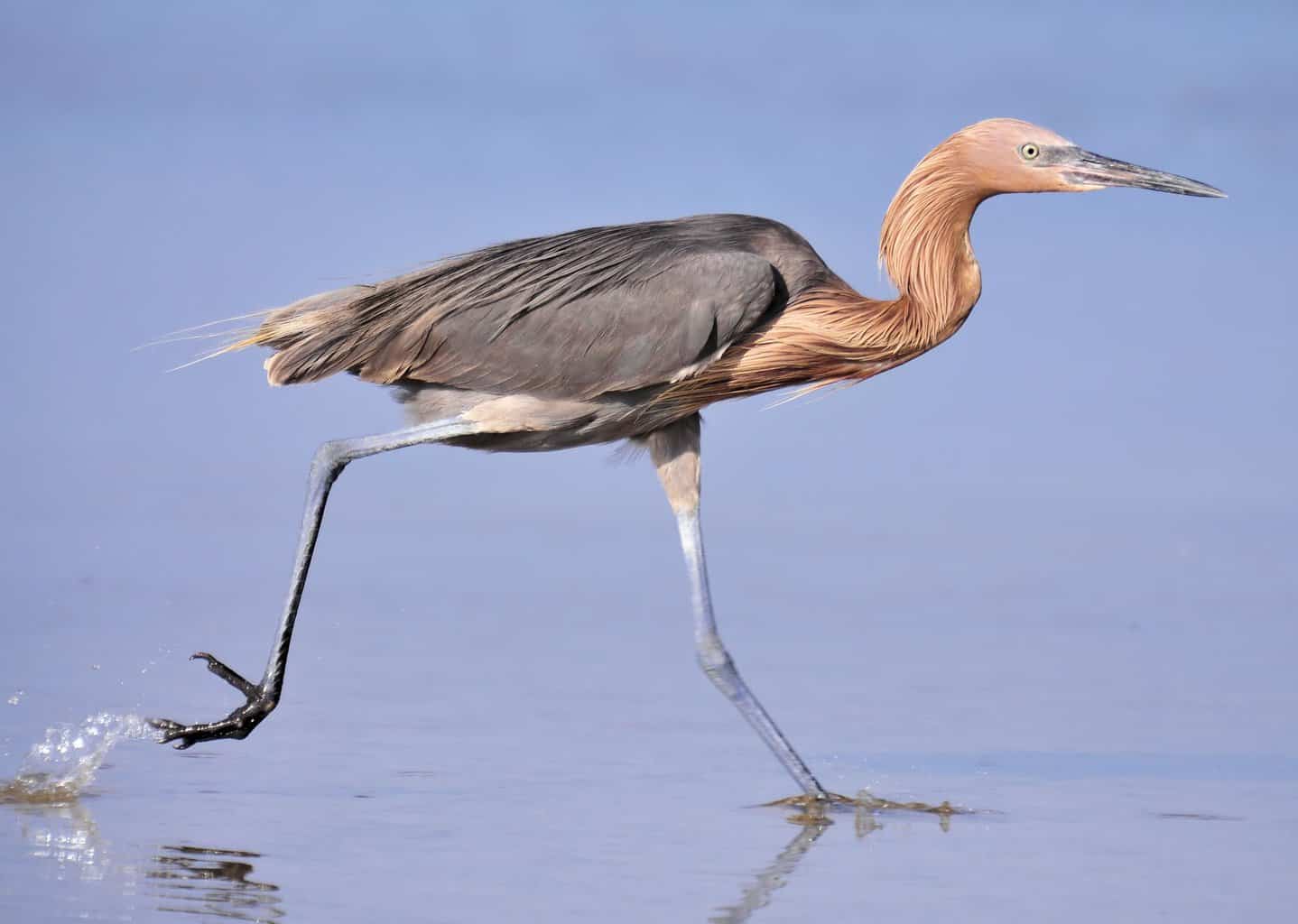
- Scientific Name: Egretta rufescens
- Length: 27.6-31.5 in (70-80 cm)
- Weight: 24.7-30.0 oz (700-850 g)
- Wingspan: 45.3-46.5 in (115-118 cm)
Reddish Egrets are active, showy birds that come in a variety of morphs or color variants. They can be found nesting with water birds of other species like herons, pelicans, and spoonbills.
The Reddish Egret’s dusky coloration and red-orange face might lead to some confusion with the Sandhill Crane.
However, its face is a much more subdued red, and it doesn’t have the white cheek pouch that the Sandhill does. Also, the Reddish Egret is significantly smaller than the Sandhill Crane.
This bird is found in coastal areas of Mexico and the gulf region and throughout Cuba and the Caribbean.

